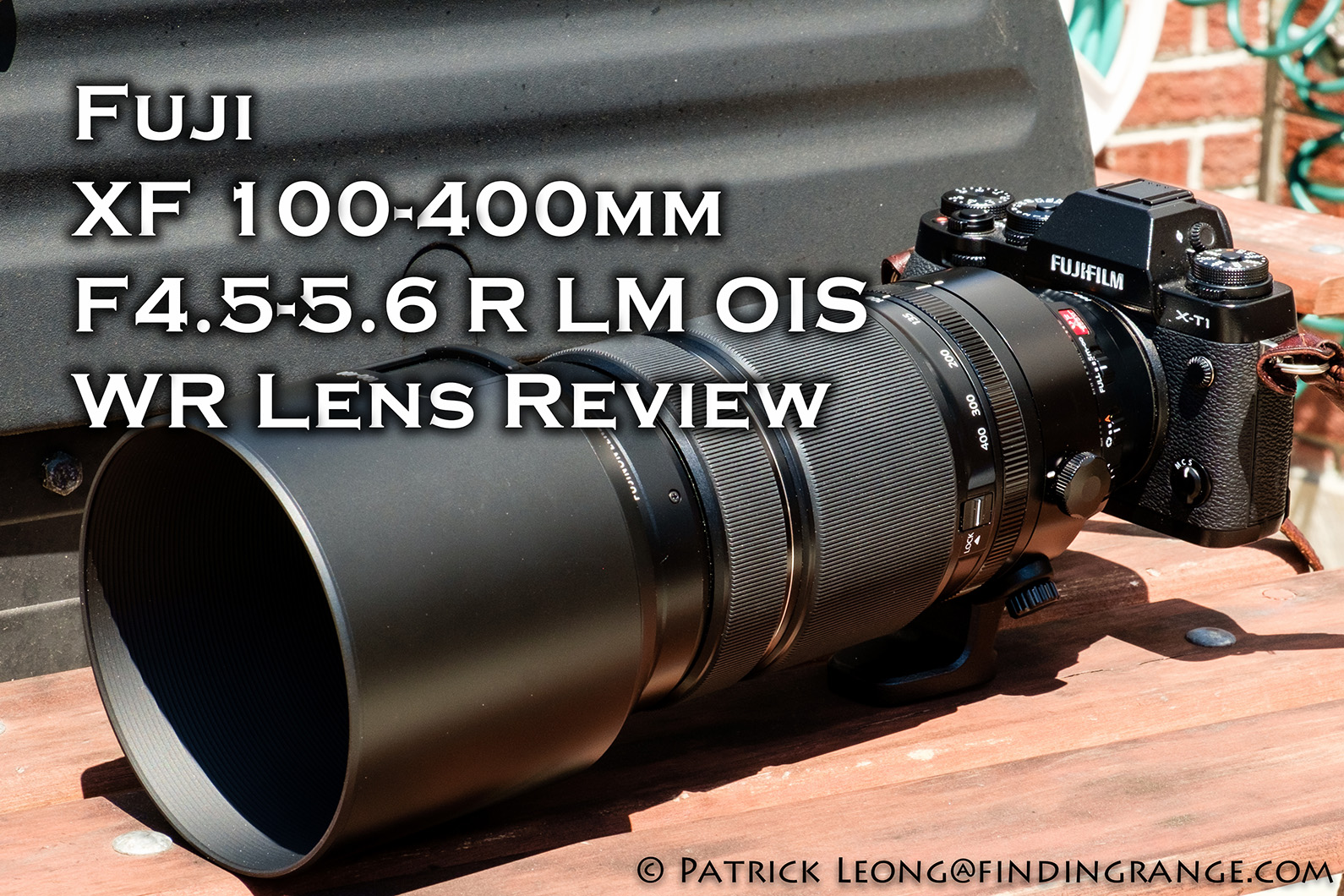Fuji XF 100-400mm f4.5-5.6 R LM OIS WR lens Review:
It’s only been a few short years yet Fuji has definitely been very busy expanding their X Series system. They went from having just three fixed focal length lenses to a system that now encompasses a vast range of different fixed focal length and zoom lenses. Thanks to the newly released Fuji XF 100-400mm f4.5-5.6 R LM OIS WR lens, they’ve now expanded to the extreme telephoto range. So far, Fuji have done a really good job making some first class lenses, so expectations are very high for this new zoom, especially since the asking price of $1899 makes this the most expensive lens in the X Series system so far. So, does the XF 100-400mm fulfill these expectations? Does it measure up? Read on and find out!
(For those interested in 1.4x Teleconverter, here’s my review of it).
Fuji XF 100-400mm f4.5-5.6 R LM OIS WR lens Build Quality:
The build quality of the XF 100-400mm is very decent, and it feels like a very solid lens. It’s built from a combination of high grade plastic and metal. The plastic is most likely used to keep weight down. The aperture ring clicks distinctively in third stops, and the focus ring is very smooth. There is a lens locking mechanism to secure it at 100mm but I didn’t have any issues with zoom creeping. In fact, while the rubberized zoom ring is large, and easy to grip, I found the zooming action too stiff for my taste. It took way more effort than it should in my opinion, at least, to rotate the zoom ring. But overall, everything is well put together, so there aren’t any creaks, rattles or loose parts to be found, and this is particularly important because a lens like this needs to be well-built to be able to support the sheer size and weight.
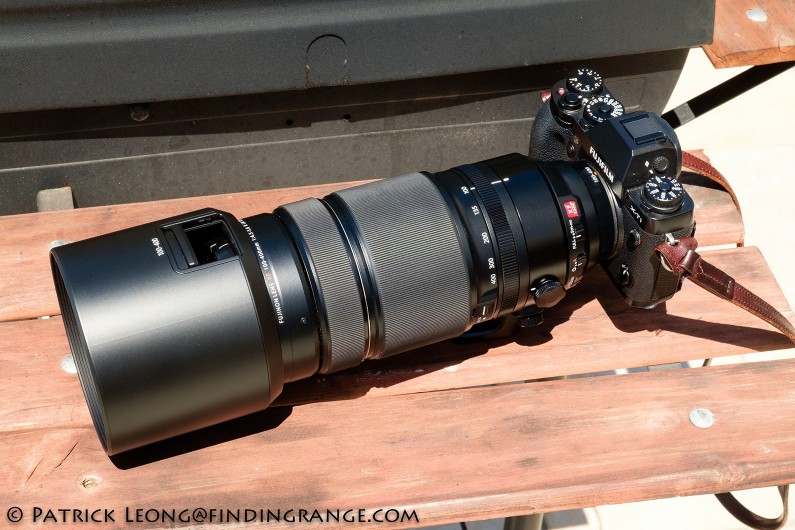
↑ The Fuji XF 100-400mm f4.5-5.6 R LM OIS WR lens in all its glory on my X-T1.
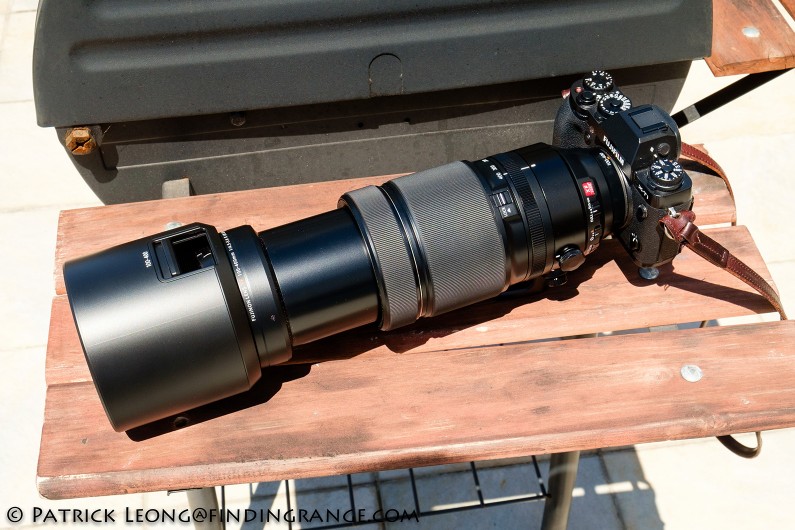
↑ The XF 100-400mm fully extended to 400mm.
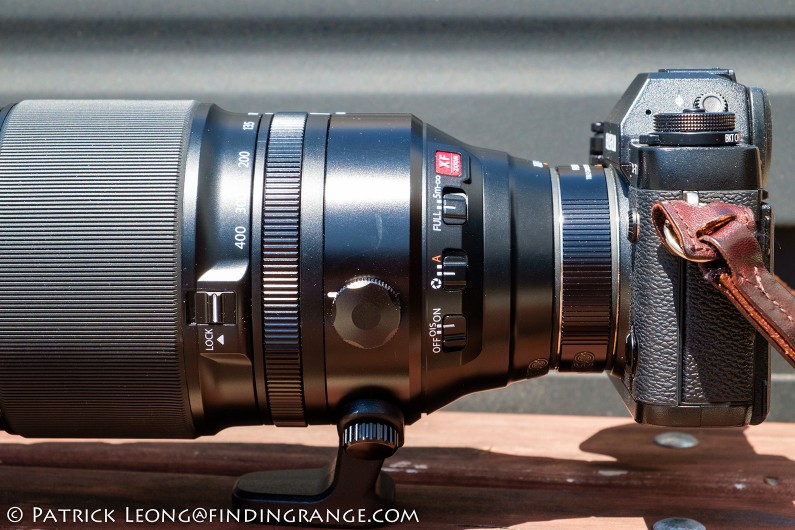
↑ Here is a close up view, so you can see the switches and knobs.
Speaking of size and weight, the length of the XF 100-400mm f4.5-5.6 R LM OIS WR lens is 210.5mm at its widest focal length and 270mm at is longest. Furthermore, at around 3 pounds, the XF 100-400mm is definitely the heaviest X Series lens made so far. As I said in some earlier posts, a lens like this is something that I wasn’t used to considering the longest focal length that I own is an 85mm equivalent. Plus, I use mostly wide angles and standard lenses here in New York City. When I walked around the streets with the XF 100-400mm, I definitely felt conspicuous, and I most certainly felt the weight, especially since the weather’s been warming up recently. However, the size and weight are not out of the norm considering the focal length of this lens. When you’re looking at a lens like this, you know what your signing up for, so all of this should come to no surprise. In fact, it is lighter than some equivalent lenses, which is a point in its favor. The weight is also very well distributed around the lens, so it feels lighter than it really is, which makes handheld photography much easier.
Another feature that makes handheld photography easier is the fantastic image stabilization in the XF 100-400mm. This is no ordinary image stabilization; it’s a five stop image stabilization system, which Fuji claim is currently the most powerful in any super telephoto zoom lens. I don’t doubt this claim at all considering my experience with it. It simply works! I was able to get tack sharp images handheld at 1/30 of a second with absolutely no outside support or anything to lean on with the XF 1.4x TC WR Teleconverter attached as well. Check out the two photos below taken with the teleconverter. The first one was taken at 1/30 of a second with the zoom set at 317mm, while the other one was taken at 1/40 of a second using the maximum focal length of 560mm. 560mm is equivalent to 853mm, and this was handheld! It’s simply incredible if you think about it.
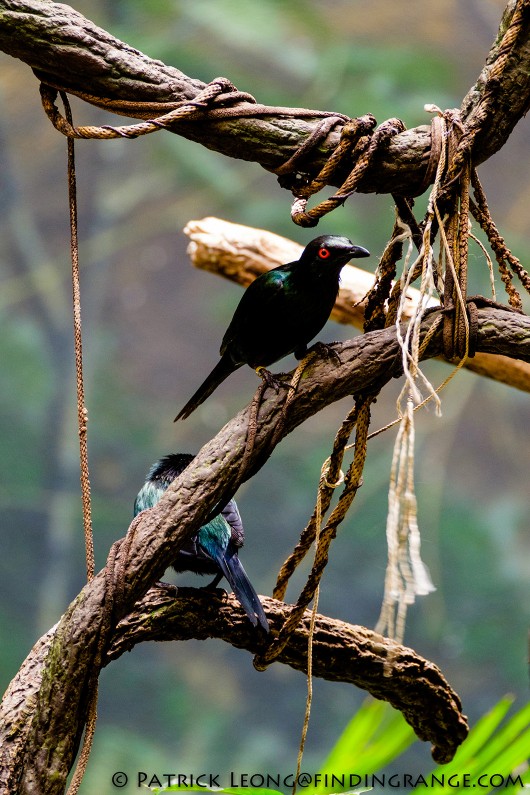
↑ This was taken in the Bronx Zoo; 1/30s F6.9 2500 ISO at 317mm with the teleconverter attached.
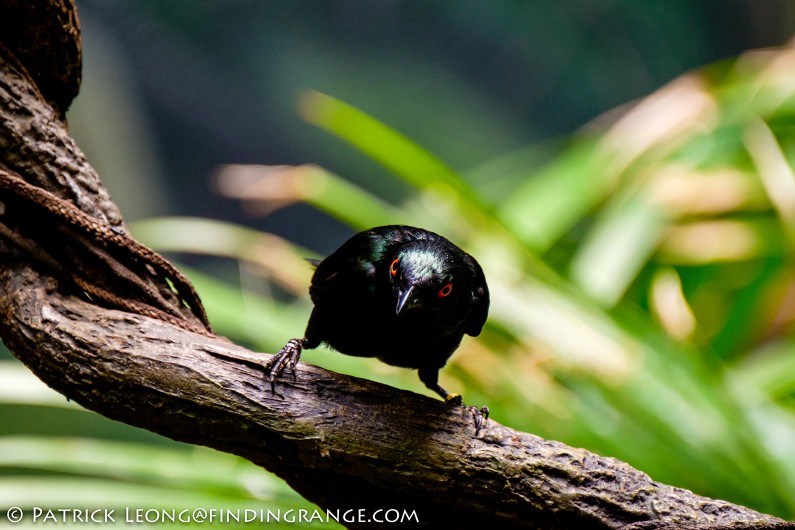
↑ Here is another photo taken at 1/40s F8 2500 ISO at 560mm. I was amazed that I could even take this shot without a tripod or something to lean against.
Of course, there are times when there is simply no substitute for a tripod, and that’s where the tripod collar comes into play. Rotating the collar is possible by loosening two knobs, and the tripod foot is also removable. Here’s the thing though: There is a very slight flex here, and I know it’s not my tripod or ball head. I’m using a Gitzo GT2542 and a Arca-Swiss Monoball Z1 dp. Both are high quality gear, and I see absolutely no flex in these two components. My Arca-Swiss alone is rated to support 130 lb. So, while Fuji’s tripod mechanism works, personally, I would’ve wanted something better. I think Fuji should’ve designed a heavier duty tripod mount/collar considering the size and weight of this lens, especially when it is fully extended. I used my Arca Swiss Universal Quick Release Plate but Fuji also has a quick release plate named the MLP-75XF for those who are interested.
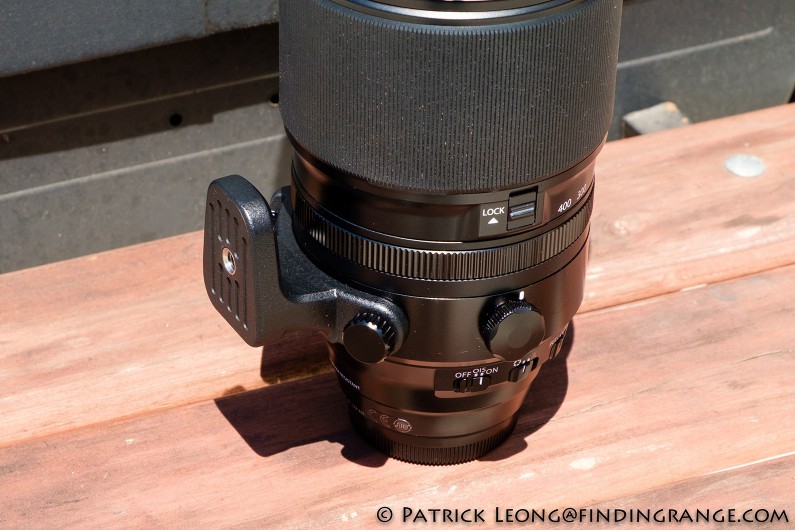
↑ Here’s a close up of the tripod collar.
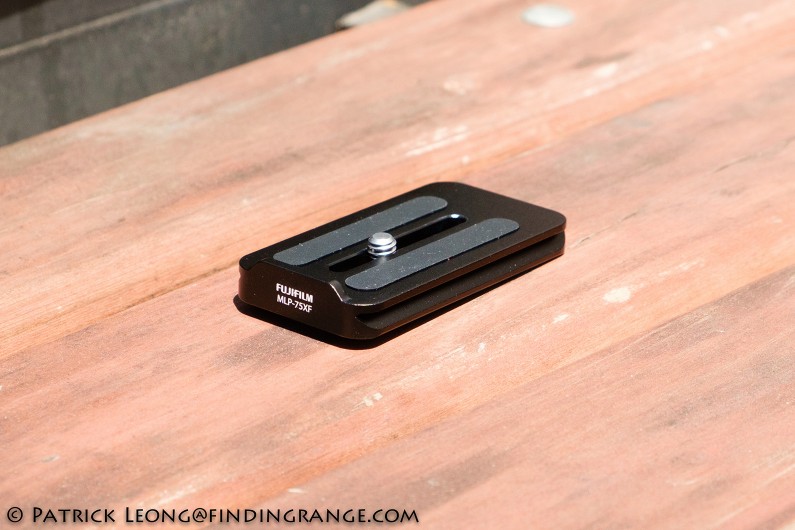
↑ Here is the Fuji MLP-75XF Quick Release Plate, which is optional.
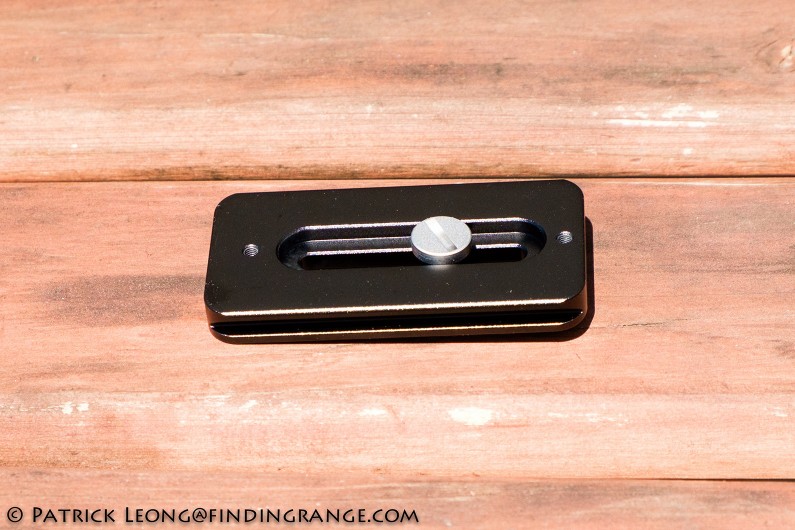
↑ The bottom of the quick release plate.
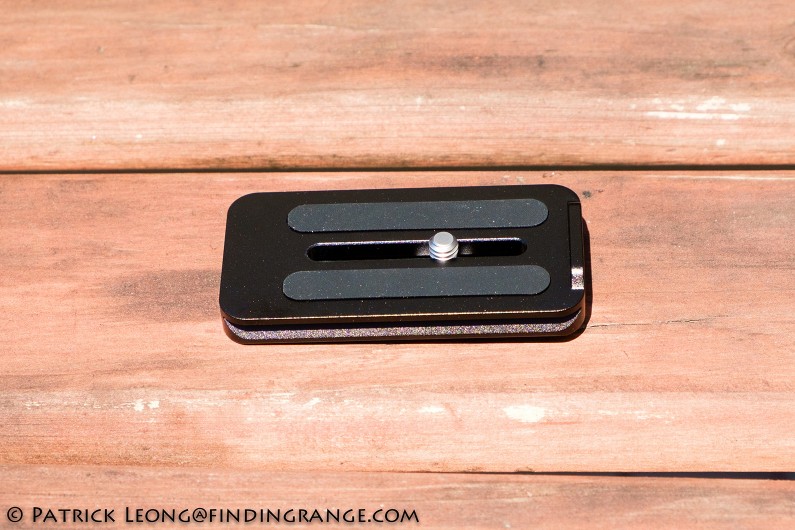
↑ Top of the quick release plate.
There are a few features that make up for the tripod issue though. For one, the lens hood has a nifty locking mechanism used to secure it on the XF 100-400mm. A simple press of a button will unlock the hood. You can also reverse-mount the lens hood to save space when you are storing the lens in your bag, and there’s a sliding window on the hood, so a polarizer can still be accessed. With 13 seals at 12 points, the XF 100-400mm by is also both water and dust resistant. There’s also a fluorine coating applied to the front element, which acts as a water repellent. It helps make the lens easier to clean and makes it less susceptible to smudges.
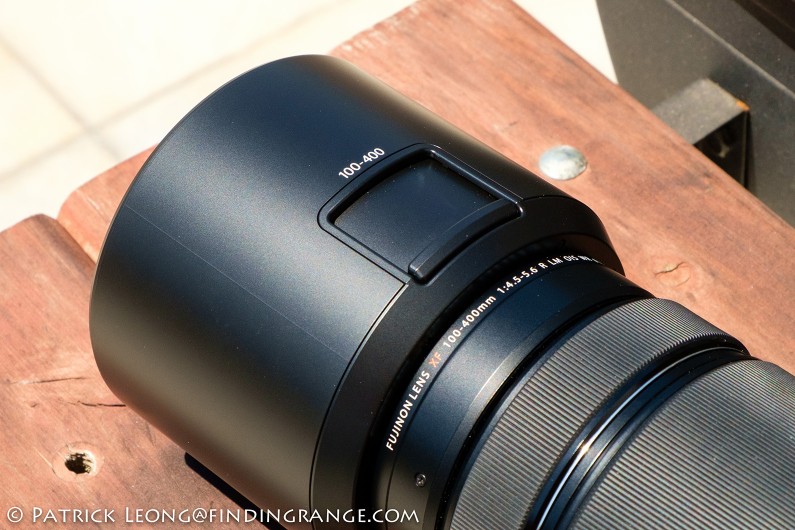
↑ The XF 100-400mm’s lens hood has a sliding door that allows you to make adjustments to your polarizer.
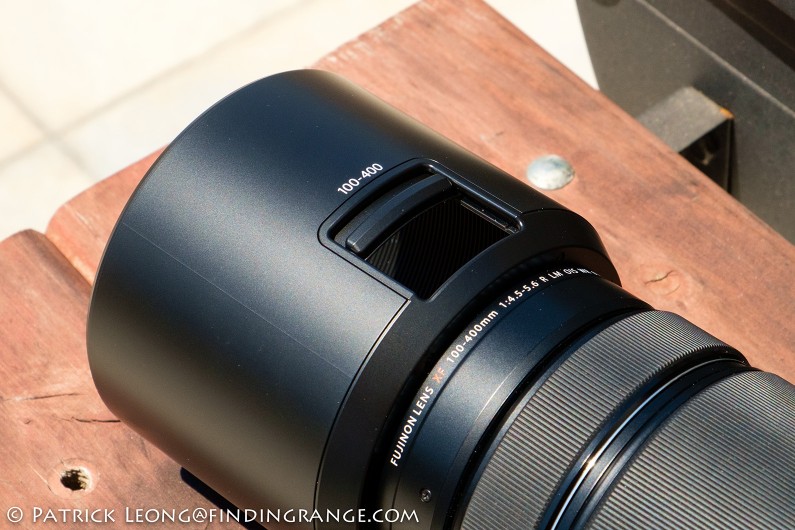
↑ Here’s how the door slides open.
Fuji XF 100-400mm f4.5-5.6 R LM OIS WR lens Autofocus:
In the past, The X Series’ Achilles Heel was always the autofocus system but a lot has changed since then, thanks to excellent firmware updates, and new technology. For the most part, with it’s twin linear motors, the XF 100-400mm f4.5-5.6 R LM OIS WR lens is definitely a lens that has a great autofocus system that is designed to take on most challenges. Truthfully, I was actually expecting something a little slower and less accurate, so I was very pleasantly surprised. This lens’ autofocus is also very quiet, which is great for events or taking pictures of animals.
Overall, the speed of the autofocus was good enough for most situations that I encountered. As you can see in some of my examples, I had no issues capturing small birds that make split second decisions and fly away suddenly. I also had no issues capturing fast moving boats or jet skies. But there are still situations where the autofocus does slow down. For one, I felt the performance drop down a bit in low lighting. Also, if you are using the longer focal lengths of the zoom, it will take a bit longer to lock on focus. Lastly, going from focusing closely to focusing far or vice versa will affect your focusing speed. However, if you don’t need to focus closely, there is a focus limiter function on the lens, which limits the close focusing point to 5m to increase focusing speed.
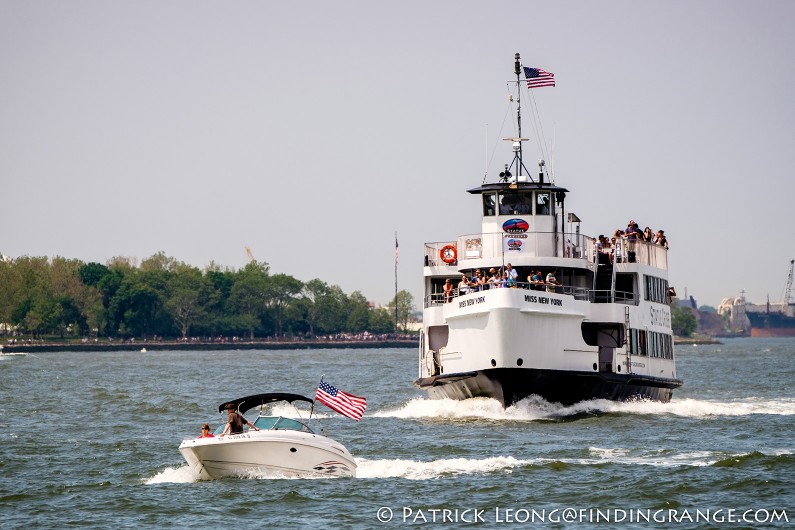
↑ The XF 100-400mm has no problems focusing on moving subjects. This was taken using 1/950s F5.6 200 ISO at 280mm.
In addition, the accuracy is also excellent. I had occasions where the lens didn’t want to lock on my subject but they were very few and far between. In fact there were so few of them that it was never a cause for concern. I was pretty impressed with how accurate the autofocus was on this lens.
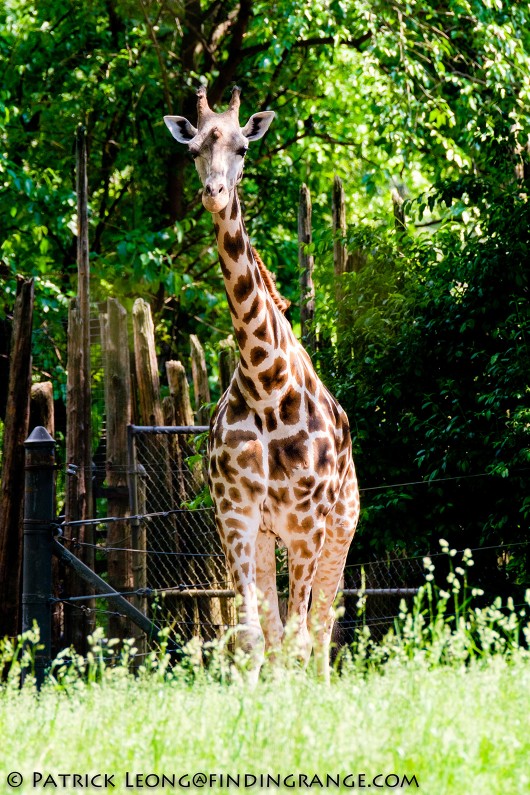
↑ This giraffe was walking right towards me rather quickly but the XF 100-400mm with the teleconverter still nailed the focus. 1/240s F10 1600 ISO at 422mm.
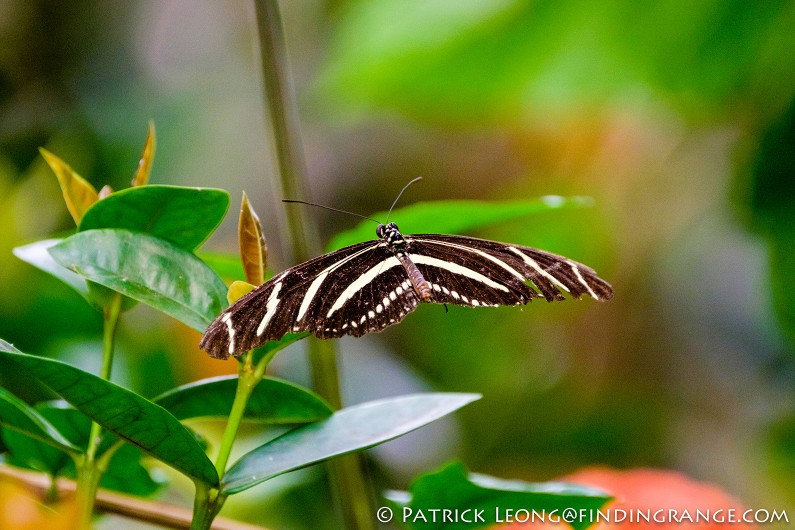
↑ The XF 100-400mm easily caught this fast moving butterfly using the longest focal length with the 1.4x teleconverter, which is 560mm! 1/70s F8 6400 ISO.
Overall, this is my take on the autofocus system: it will handle most challenges, and for the most part, it is good enough that I didn’t feel like I was hindered by it at all. But notice I say in the last sentence, “for the most part”. My feeling is that you’ll get most of your shots; you just won’t get every single one. Still, that’s excellent though if you think about it.
Fuji XF 100-400mm f4.5-5.6 R LM OIS WR lens Image Quality:
With Fuji’s track record of making optically excellent lenses, I’m sure many expect the XF 100-400mm f4.5-5.6 R LM OIS WR lens to have killer performance, and I have to say, I don’t think many will be disappointed. This lens exhibits many of the same signature traits and qualities that have given all the other X Series lenses such a huge following. Photos exhibit plenty of depth and clarity. Colors are rendered nicely; nothing is overkill. This lens also produces decent contrast. Vignetting is pretty much non-existent, and the XF 100-400mm F4.5-5.6 is also highly flare resistant. In fact, I don’t even have a photo from this lens that exhibits any flare.
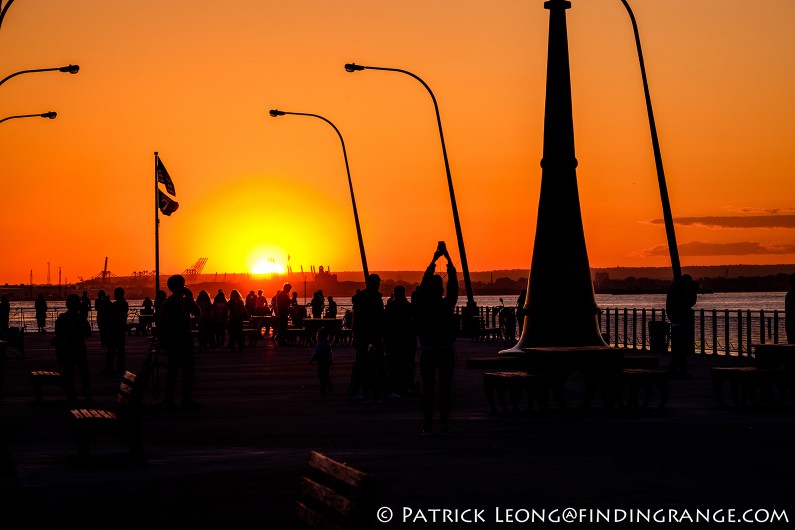
↑ 1/110s F8 200 ISO at 100mm.
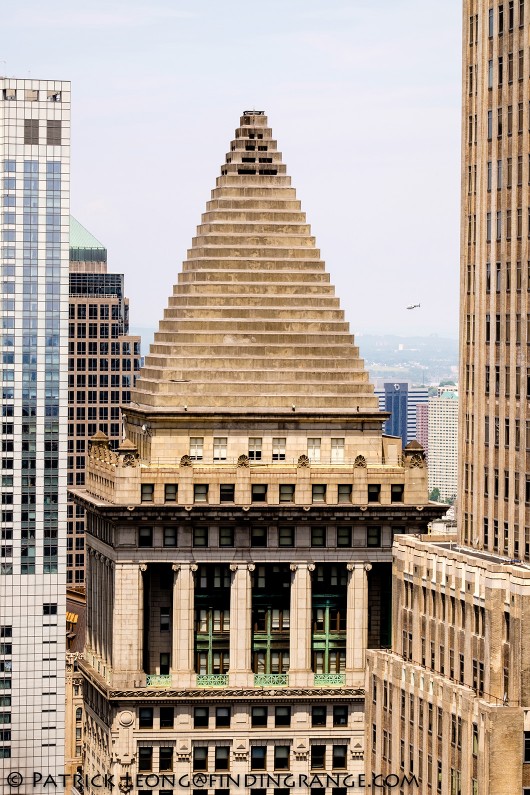
↑ 1/170s F11 200 ISO at 100mm.

↑ 1/60s F5.6 800 ISO at 235mm.
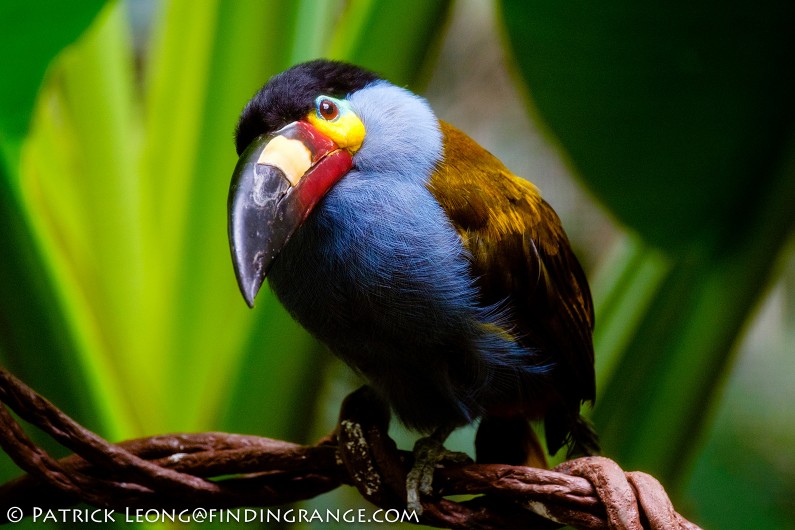
↑ This was one of my favorite shots. If you see a little haze to it, it’s because it was taken through a mesh screen. 1/125s F6.9 2500 ISO at 317mm. The teleconverter was attached.

↑ 1/450s F8 200 ISO at 100mm.
The XF 100-400mm f4.5-5.6 R LM OIS WR lens is also very sharp, especially for a super tele zoom. I was quite impressed by the results. I went out one night to take some cityscape photos, and was amazed at the level of detail that this lens can retrieve. Check out the photos below: Look at how defined the cables are on the Manhattan Bridge. As for the freedom tower photo, you can see the individual beams in the windows. Even with the XF 1.4x TC WR Teleconverter attached, details are impressive. When I went to the Bronx Zoo, I was taking photos of birds, and you could see all the little details in the feathers, and as we all know, teleconverters often degrade images.
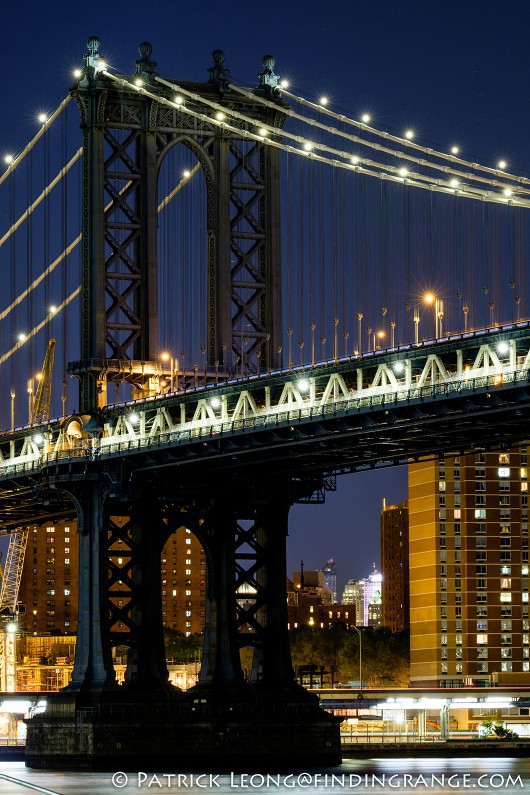
↑ 30s F11 200 ISO at 100mm.
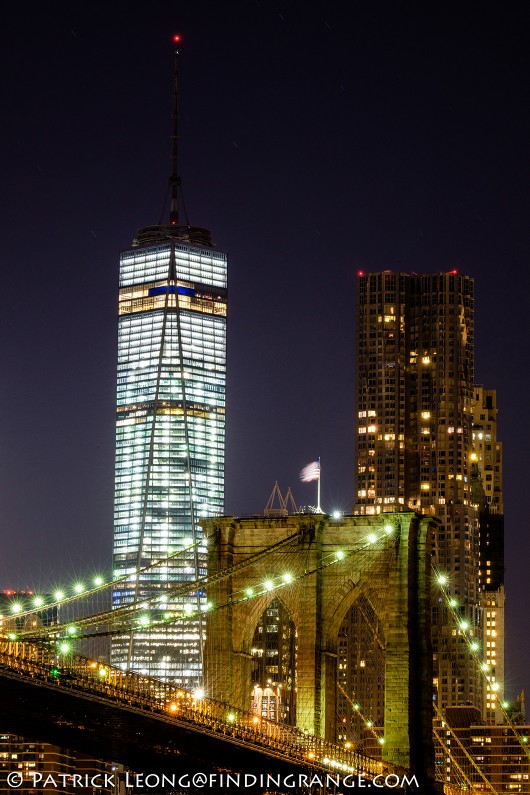
↑ 30s F11 200 ISO at 100mm.
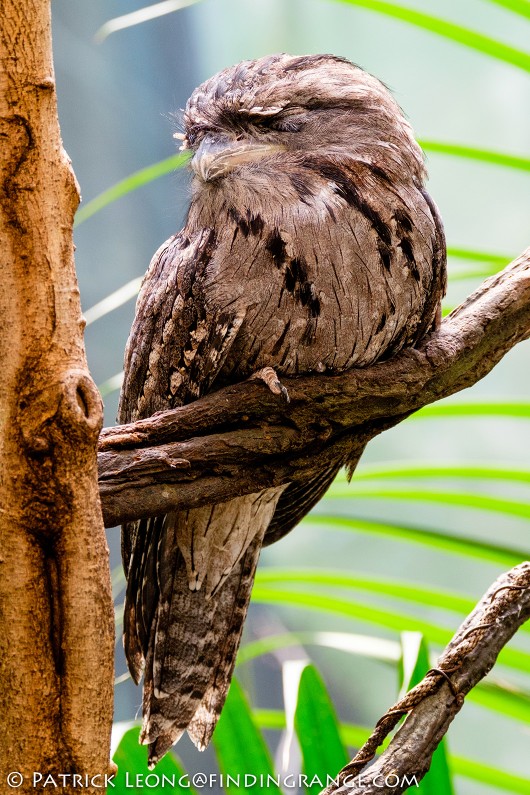
↑ This was also taken through a mesh screen but look how sharp this photo came out. 1/140s F7.1 2500 ISO at 222mm. The teleconverter was attached. This was taken through a mesh screen.
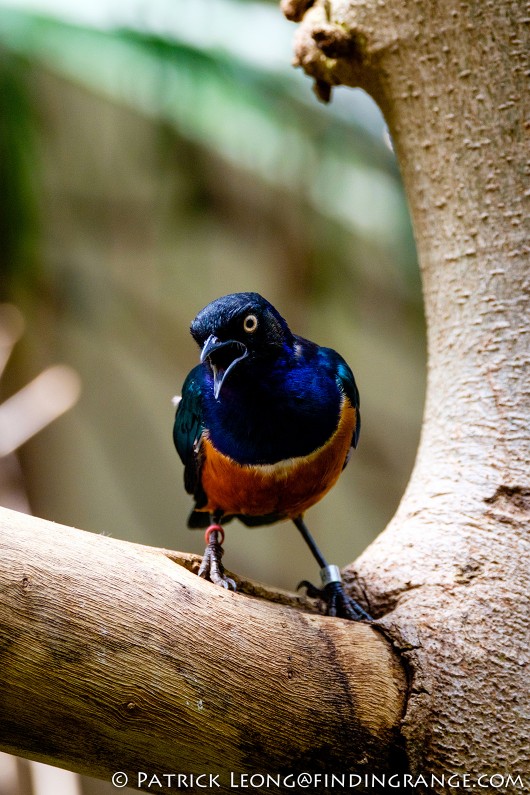
↑ This bird was moving extremely quickly but the XF 100-400mm had no problems locking on. 1/340s F6.7 2500 ISO at 256mm. The teleconverter was attached, and by the way, this was also taken through a mesh screen.

↑ 1/350s F5.6 1600 ISO at 400mm.
The beauty of XF 100-400mm f4.5-5.6 R LM OIS WR lens is that while it’s not the fastest lens in the X Series system, it gives very consistent performance throughout it’s aperture and zoom range. This makes the lens extremely versatile because you know you’ll get great results no matter what focal length or aperture speed that you decide to choose. At 100mm, even at its largest aperture of F4.5, I found most of the frame to be very sharp. When using this lens at different focal lengths at their respective wide open apertures, it also produced similar results. Stopping this lens down by even just one stop sharpens up the edges nicely, and if you’re using F8 or F11, everything in your photos are as sharp as a tack. If you’re wondering how the XF 100-400mm compares to other X Series lenses, I would say that it is not quite as sharp as the brilliant XF 90mm but then again, it’s as sharp as many of the other X Series lenses, especially the zooms, and therefore, it’s up to par with what we expect from Fuji.

↑ 1/125s F4.8 200 ISO at 159mm.

↑ 1/1000 F5.6 200 ISO at 400mm.

↑ 1/25s F9 400 ISO at 400mm.

↑ 1/210s F7.1 1600 ISO at 128mm.
As for bokeh and shallow depth of field, I found it to be simply sublime. It is ultra smooth, and actually reminds me of the bokeh from one of my favorite lenses, the XF 90mm. The results were excellent, and I was amazed at how even the harshest of backgrounds were simply smoothed out. The way the sharpness of the subject transitions to the smoothness of the bokeh is incredible in my opinion. Look at the photo of the parrot below.
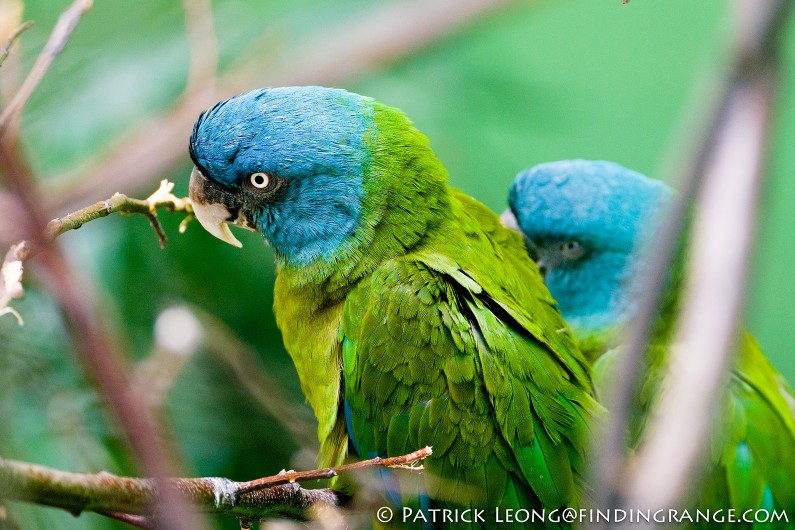
↑ I love how smooth the bokeh is from the XF 100-400mm. 1/140s F6.6 2500 ISO at 207mm. This is another shot taken through a mesh screen.

↑ 1/480s F7.8 2500 ISO at 522mm. Another shot taken through a mesh screen.

↑ I love the bokeh that comes out of the XF 100-400mm. 1/120s F5.6 800 ISO at 143mm.
Fuji XF 100-400mm f4.5-5.6 R LM OIS WR lens Pros and Cons:
Fuji XF 100-400mm f4.5-5.6 R LM OIS WR lens Pros:
- Well built.
- Heavy but not overkill; weight is also well distributed throughout the lens, so it feels lighter than it really is.
- Image stabilizer is fantastic. Makes handheld shooting with this lens downright easy.
- Weather and dust resistant.
- Well designed hood.
- Autofocus is decent.
- Image quality is excellent.
- Beautiful bokeh.
Fuji XF 100-400mm f4.5-5.6 R LM OIS WR lens Cons:
- Although high grade, some plastic was used to make this lens.
- Not a fan of the tripod collar/mount.
- While the autofocus is great, it still needs to be improved just a bit for serious action scenes.
Fuji XF 100-400mm f4.5-5.6 R LM OIS WR lens Verdict:
Overall, the Fuji XF 100-400mm f4.5-5.6 R LM OIS WR lens is an excellent addition to the X Series lineup, and should serve those who need an extreme tele very well. It’s well built, and weather sealed, so those who need to take this lens to more extreme climates should have no issues. The image quality is also up to par with what we all expect from Fuji now.
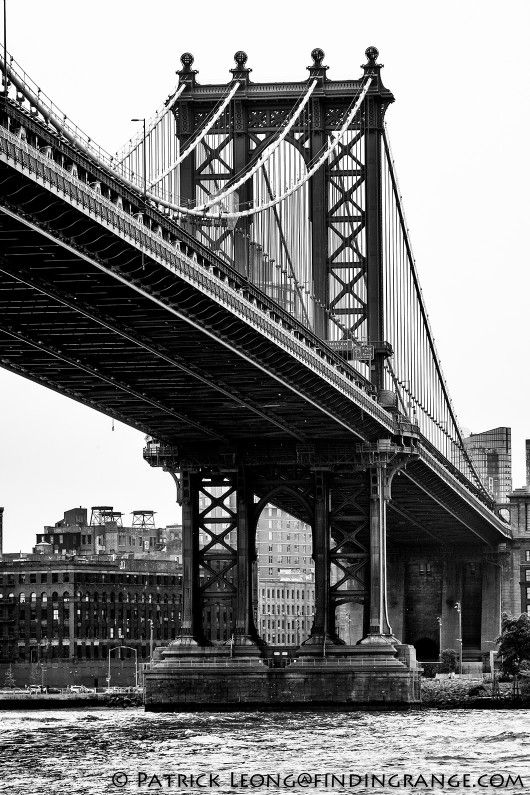
↑ 1/140s F11 200 ISO at 100mm.

↑ 1/210s F4.5 200 ISO at 100mm.

↑ 1/80s F16 200 ISO at 100mm.
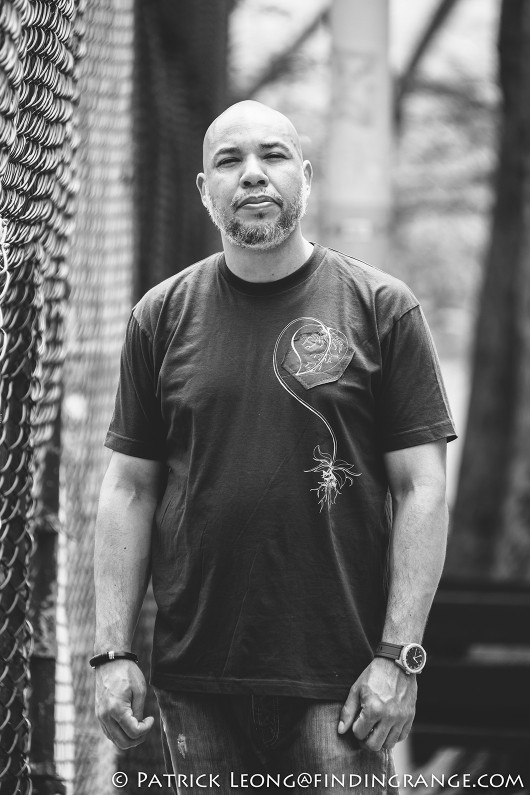
↑ 1/250s F5 200 ISO at 243mm.
Are there issues? Of course, but that’s with every piece of gear. The important thing is none of these hiccups are major enough that it will take away from the experience of using this lens. I was really looking forward to reviewing the XF 100-400mm because I don’t use lenses with such long focal length often. I wanted to try something different and I’m glad to say that this lens made the experience of using such extreme focal lengths quite enjoyable and memorable. As you can see, I took many photos with the XF 100-400mm (I have plenty more for my upcoming 1.4x Teleconverter review 😉 ). I had this on loan but I didn’t want to return it :). I loved using this lens so much that it went everywhere with me even though it is large and heavy. I love the pictures that I was able to get with a lens like this, the image quality was superb, and the lack of any major issues made this lens downright fun to use. I think this lens is a brilliant effort by Fuji, and I highly recommend it to anyone who wants to experience shooting something with such an extreme focal length on the X Series system.
Thanks for taking the time to read my review! If you’re considering purchasing the XF 100-400mm, and my review helped you decide, please help support this site by purchasing from the links below or any mentioned in this review. It will not cost you anything extra. Thank you for your support!
XF 100-400mm f4.5-5.6 R LM OIS WR lens at B&H Photo
XF 1.4x TC WR Teleconverter at B&H Photo
XF 100-400mm f4.5-5.6 R LM OIS WR and 1.4x Teleconverter Kit at B&H Photo

